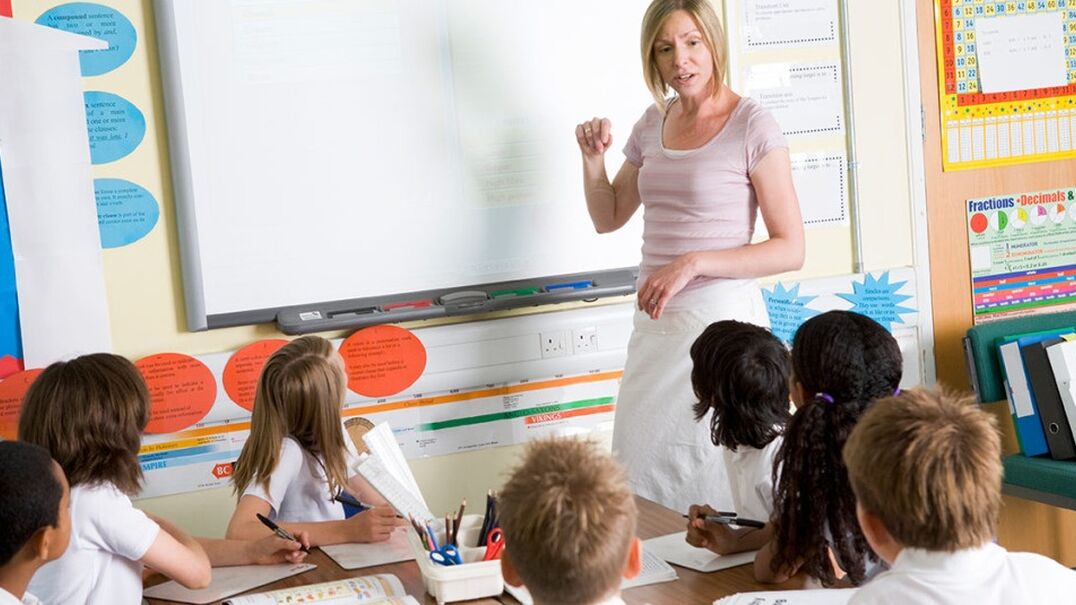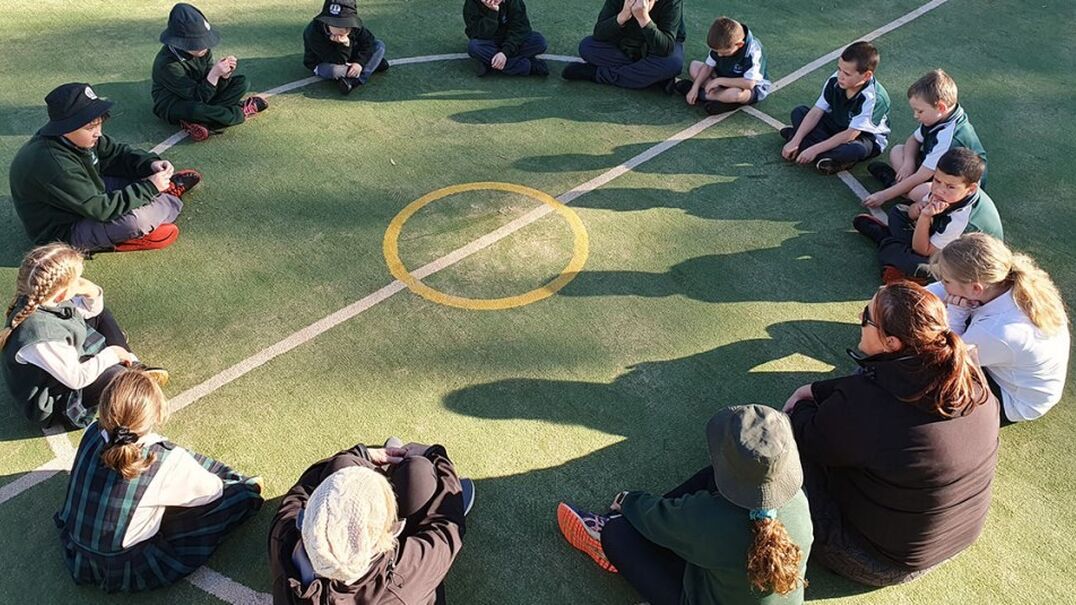Journalist Adam Carey interviewed a number of BSEM’s stakeholders and supporters about the implementation of BSEM and how it helps build safer, healthier and more engaging classrooms for all students. The article was published in The Age on May 18, 2023. The use of this work has been licensed by Copyright Agency except as permitted by the Copyright Act, you must not re-use this work without the permission of the copyright owner or Copyright Agency.
Each day begins the same way at Mahogany Rise Primary. Three minutes before the morning bell, music plays throughout the school, giving students an aural cue to head to class.
Once inside their classroom, each child checks in with their teacher about whether they feel ready to learn, by putting their name in a coloured zone.

Green signals that the student is ready, blue is a cue that something is not right and the red zone means the child is distressed.
"If they're in the red zone, you can probably tell already anyway," principal Andrew Schneider said.
Students in the red each have three strategies - maybe a five-minute walk or three minutes of stomping up and down on the spot - to get to green, so they can join their classmates in learning.
The check-in system is just one technique the Frankston North school uses to set a calm environment as part of a positive teaching model it has learnt from children's charity Berry Street.
Schneider met Berry Street's director of education, Dr Tom Brunzell, four years ago in one of his most fraught moments in the job. A student had climbed onto the school roof and he was trying to get him down.
"He [Brunzell] just sort of showed up, like this floating angel. He just rolled in and he said everything was going to be OK. And he was right."
The troubled school Schneider took over in 2019 and the orderly one he heads today are "poles apart", he said.

He credits much of the transformation to its adoption of Berry Street's "trauma-informed" teaching model, which has given teachers new techniques to engage with students.
Berry Street routinely works with schools where there is a high level of disadvantage and trauma.
But the charity is experiencing a surge in interest from more advantaged schools also struggling with classroom behavioural issues, Brunzell said.
He said that demand for its services has doubled since the COVID-19 pandemic interrupted face-to-face learning for two years.
On Friday, about 80 teachers from more than 20 schools in Melbourne's south-east will visit Mahogany Rise to hear how Schneider and Brunzell have built a more positive learning environment.
Mental health problems among students have driven many schools to look for new solutions, Brunzell said.
"We are now seeing the impacts of two years without consistent classrooms. These are kids that are not self-regulated, they're melting down, not connecting to others, doing unsafe things."
Doveton College has also spent several years training its staff with Berry Street's educational model.
Principal Debra Gibson said some teachers came to her in the past and said, "I can't teach these kids because they're not listening".
The teachers have since changed their language and approach to using strategies to help students engage. The key is creating a consistent expectation that all students will learn and respond to "micro-moments" before a blowout occurs, she said.
"It's not just the kids with traumatic backgrounds that this is helping," she said.
It's pushing our higher-level students to extend themselves more because we're finding ways for all students to improve, to learn more about themselves and their goals, no matter their background.
Professor Helen Stokes, of the Melbourne Graduate School of Education, said Berry Street's teaching model suited the times.
"It has been really important for children and young people coming back to school after COVID and all the remote learning they've had - and that's across the board, it's not about whether you are high or low socioeconomic," Stokes said. "All those mental health issues with children especially are across the board."
Stokes has studied the model up close in three Frankston schools since its introduction in 2019. She says it works because it gives students a safe way to communicate their readiness to learn and it gives teachers a way to help them without distracting the rest of the class.
Punitive practices such as detention are no longer used because they weren't working anyway, she said.
"There's still work to do around bullying that happens," she said. "But certainly in terms of having expectations to learn and that the classroom environment enables them to learn, those things have changed dramatically."
Other education experts The Age spoke to endorsed the model.
Professor John Hattie, one of Australia's most influential education academics, said he had seen its use bring focus to a previously disengaged classroom.
It's not just trauma-informed for the sake of making kids feel good about themselves; they actually go about the learning process.
In its submission to a Senate inquiry into increasing disruption in Australian classrooms, Berry Street drew a link between chaotic classrooms and the high rate of teachers exiting the profession, with more than a third of teachers indicating in a major national survey published in March that they intended to leave teaching.
"This issue is important because poorly addressed disruptive student behaviour can lead to a breakdown of a trusting teacher-student relationship and disengagement with education," the submission said.
"It is also important because struggling to manage disruptive and disengaged student behaviours can lead to educator burnout and exiting the profession."
A state government spokesperson said schools were supported to foster positive student behaviour in many ways, with mental health practitioners in secondary schools and the $287 million mental health fund.
"The vast majority of classrooms across Victoria are calm and orderly environments, providing students with safe and rewarding learning spaces," the spokesperson said. "If a principal requires additional support to manage disruptive behaviour, the department has a range of programs available to support the development of a positive learning environment."



